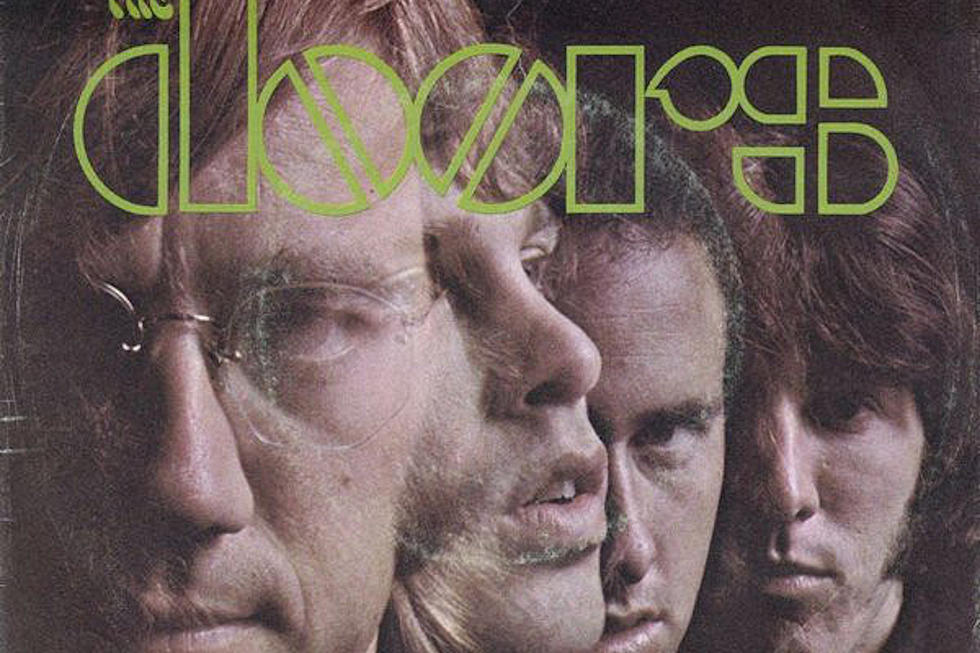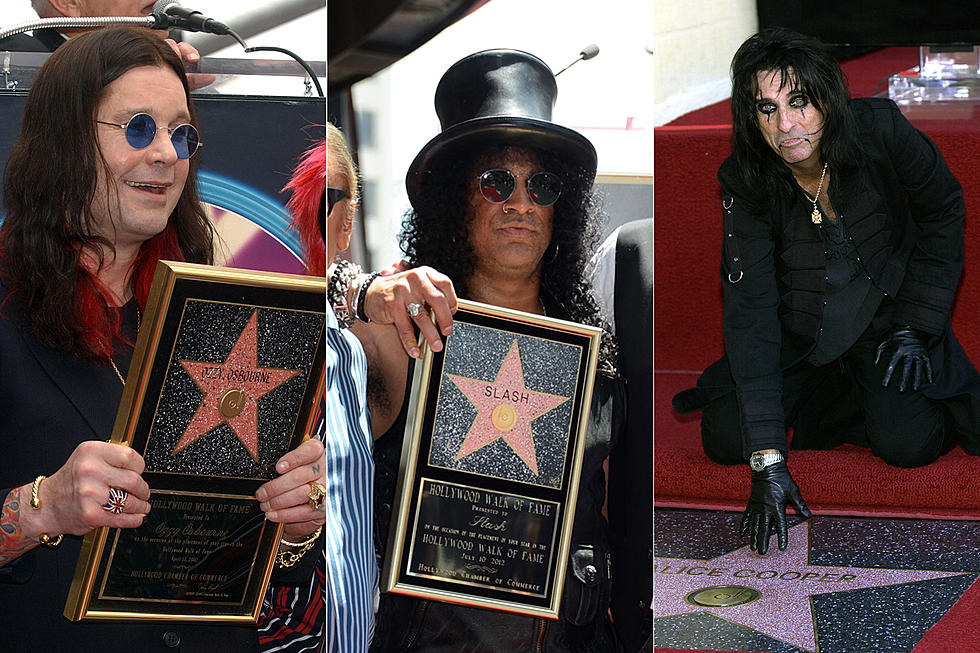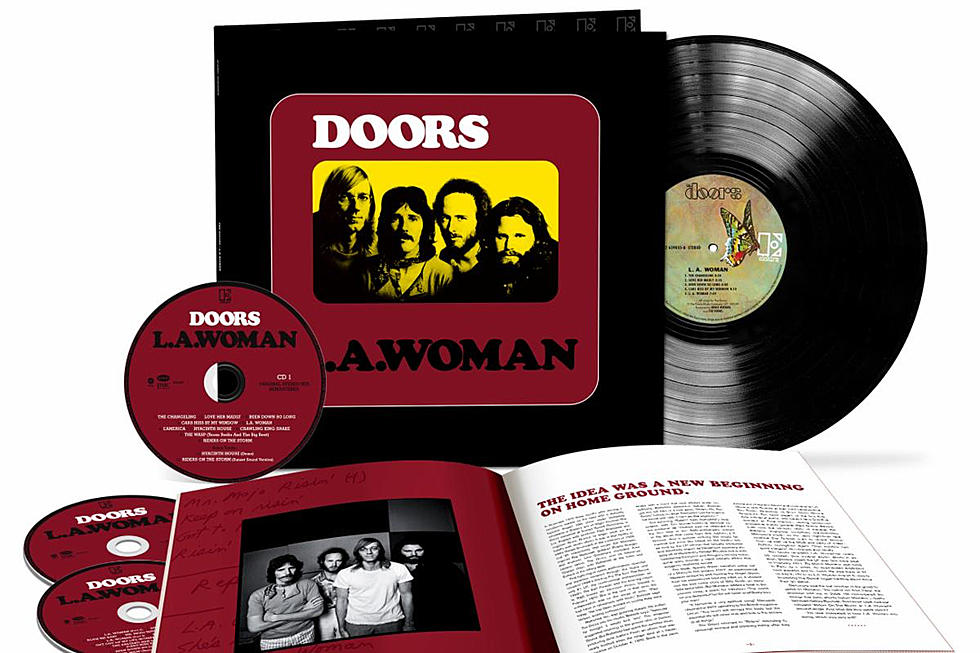
Why the Doors’ ‘Break on Through’ Didn’t Break Through at First
The Doors' recording career started with a whimper, not a bang.
By 1966, the band had become something of a sensation on the Los Angeles rock 'n' roll scene, with famed residencies at a pair of clubs on the Sunset Strip: the London Fog and the Whisky a Go Go. The Whisky gig unceremoniously ended when singer Jim Morrison went into an oedipal rant about doing unmentionable things to his mom and dad in the song "The End." But by the time of that implosion, the band's talent, and talent for pushing boundaries, had already gotten them signed by Elektra Records.
In August 1966, Elektra set them up in Hollywood's Sunset Sound Studios under the care of producer Paul A. Rothchild and audio engineer Bruce Botnick - whom keyboardist Ray Manzarek would later call "Door number five and Door number six" for their contributions to the band's success. It took them 10 days to record their eponymous debut album, which they released on Jan. 4, 1967.
The first single released to support the album was "Break on Through (To the Other Side)," the hard-driving, Latin-rhythm-inspired track that opens the record. It sank like a stone, peaking at No. 126 on the Billboard chart before disappearing altogether.
Listen to 'Break on Through (To the Other Side)' by the Doors
It was a strange time in rock 'n' roll, "an era of intense experimentation," recalled producer Rothchild, in which "everyone was trying to out-hip each other." The '60s were well underway, as was the so-called "psychedelic revolution" in music but not everyone was on board. Even esteemed music critic Robert Christgau would sniff that these new California bands like the Grateful Dead, Jefferson Airplane, Love and the Doors were full of an "in-group pretentiousness" that threatened to alienate the audience rather than to cater to them. Where was the good ol' pop music sensibility that used to lie at the heart of rock 'n' roll? "I still remember when rock 'n' roll was mostly fun," he moaned at the end of his 1967 piece.
Christgau's take was telling. As evidenced by Morrison's theatrics that got the band kicked out of the Whisky a Go Go, club owners, record labels and even the public were at once hungry for a new sound that captured the monumental social changes going on in the world. At the same time they were a little scared of the form that sound might take.
Elektra producer Mark Abramson directed a short "promotional film" for "Break on Through" that featured a lot of side-lit shots of Morrison singing the lyrics (recalling the image that appeared on the LP's famous album sleeve, for which photographer Joel Brodsky was nominated for a Grammy), but when the camera swung to Manzarek and guitarist Robby Krieger, they were wearing suit jackets and ties. This nod to the more staid sartorial tastes of earlier generations of musicians worked as a clear visual signal to the audience: This band may be new and edgy and wear their hair long, but don't worry, they're still good, clean, suit-wearing kids at heart.
Watch the Music Video for 'Break on Through (To the Other Side)' by the Doors
Despite the label's efforts to take the edge off the single, it failed to catch on. It wasn't until a trimmed three-minute version of another song on the album, "Light My Fire," was released in April 1967 that the band took off. "Light My Fire" hit No. 1 on the Billboard chart in July, the album started to sell and the Doors were soon one of the most famous bands in the world.
The roaring success of "Light My Fire" said a lot about the initial failure "Break on Through." Its melody, powered by Manzarek's famous keyboard line, is lighter and more digestible than the raw aggression of the driving bass line (also played by Manzarek on a keyboard) that undergirds "Break on Through." And Morrison's lyrics to "Light My Fire" are close enough to a traditional love song to reassure the audience while also titillating them with a drug-reference double entendre about how love could get them "higher."
The lyrics to "Break on Through," on the other hand, are full of the kind of boundary-crossing and new-world mysticism that would come to define the band and era. There's less titillation to them and more challenges. In early 1967, they were far more discomfiting for average music listeners.
With the song's opening claim that "day destroys the night, night divides the day," steamy invocations of "chasing pleasures" and imagery of "arms that chain, eyes that lie," "Break on Through" creates an uneasy alliance between love and destruction. When Morrison intones over and over that "she gets high" (a line originally censored) and repeated urgings to "break on through," it's clear that all this erotic mysticism is directly tied to a drug-fueled journey to something new.
Soon enough, boundary-pushing like this would be commonplace. And eventually the song would go on to find heavy radio play, becoming a standard on classic-rock stations in the '80s. The album it opened is still regarded as one of the definitive records of the era. But in January 1967, audiences still weren't ready to embrace the new world that "Break on Through" prophesied, even though that world was already emerging around them.
Doors Albums Ranked
More From KQCL Power 96










